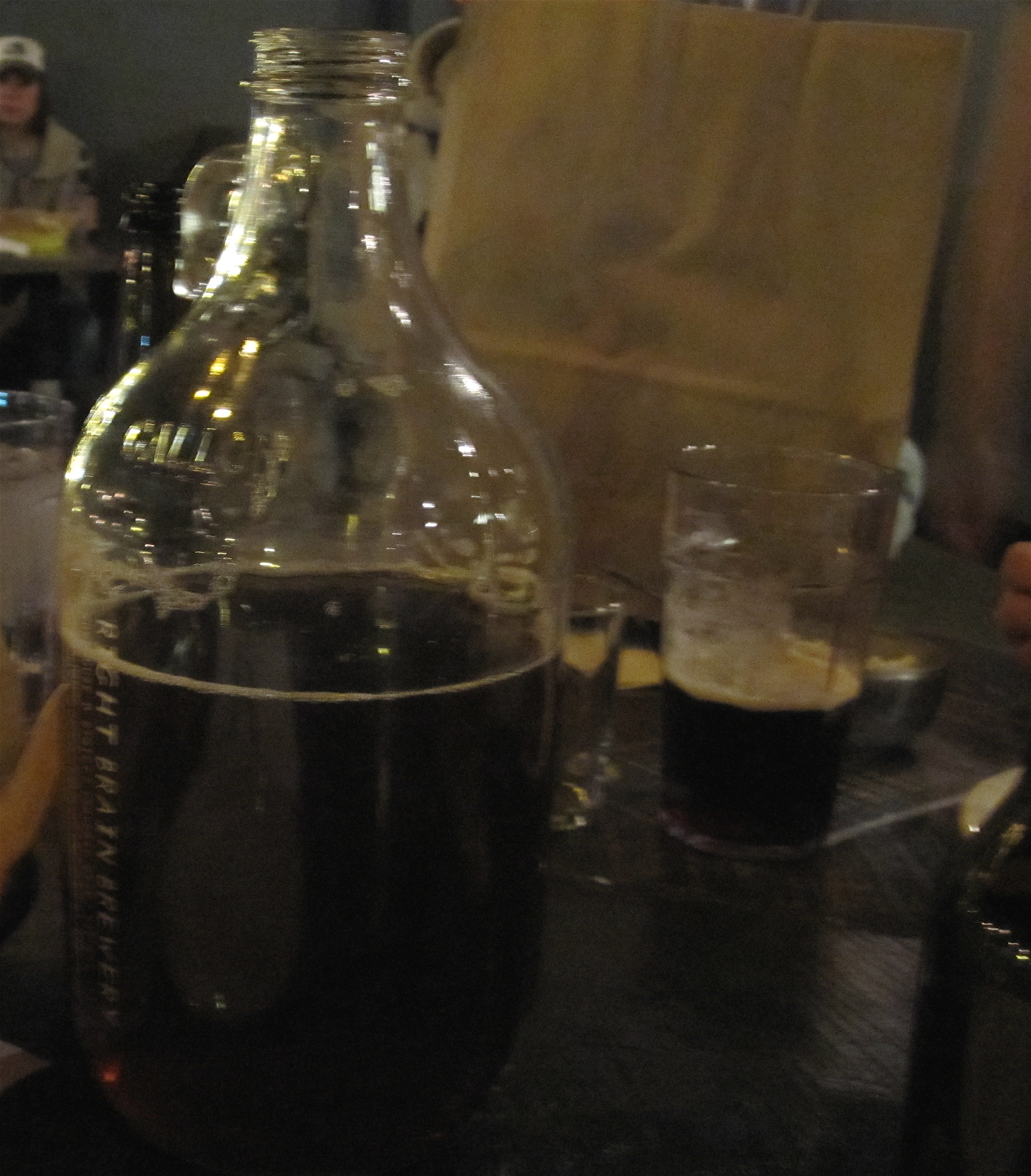It turned out that one of our table mates was a famous local-Chicago food blogger, there to review the restaurant! She even mentioned my beer in her review! I quote:
"Sweet, spicy, addicting, it was a suggestion from our communal dining partners, who were also kind enough to offer us a sample of the house-brewed beer (a damn jug of it) they had BYOB’d. Their brew was a red ale (unnamed) and tasted to us like a darker, richer Leinenkugal’s Red. (I can’t recall the brewer’s name, but I won’t forget his beer blog name) Finally a communal seating situation that involves table sharing of home-brewed beer! The dark rich ale held up to the parade of flavors on our palate and happily filled us up. And as nice as it would be to hang at a communal table shared by home-brewers at Belly Shack again, I’ll be happy just to try the rest of the menu including the highly-acclaimed tostones with chimichurri sauce, the roasted squash and the belly hot dog with kimchi salsa and egg noodles. Communal beer or not, I’ll be back to belly up."
And the best thing is that she plugged the blog too! Do you know what that means? That means that now 3 people in total have looked at this site! Fun!
Check out Elizabites for all of the best eating around Chi-city.










